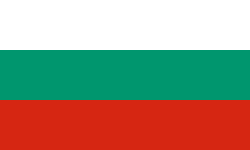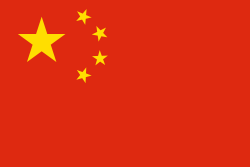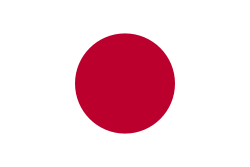In today's competitive landscape, the critical question is no longer *if* a business should automate, but *how*. Simply acquiring individual robots for isolated tasks creates a new set of complex challenges, from integration nightmares to data silos. This analysis demonstrates how a holistic, unified platform—The Robot Industries Ecosystem—transcends these limitations. We will explore a strategic scenario illustrating how moving from fragmented automation to an integrated ecosystem is the definitive path to unlocking unprecedented efficiency, scalability, and a future-proof competitive advantage.
The Fragmentation Challenge: Why Standalone Robots Fall Short
Many enterprises begin their automation journey by purchasing individual robots for specific, high-priority tasks. A robotic arm for welding here, an autonomous mobile robot (AMR) for transport there. While this approach yields localized gains, it often leads to a complex and inefficient operational ceiling. This is the 'fragmentation challenge': a factory floor of high-tech equipment that fails to communicate, collaborate, or scale effectively.
The common pitfalls are both costly and restrictive:
- Integration Deadlocks: Systems from different vendors operate on proprietary software, making seamless communication nearly impossible without expensive, custom-built middleware. This creates bottlenecks where automated processes meet.
- Data Silos: Valuable operational data on performance, uptime, and errors remains trapped within each machine. Without a unified data stream, holistic analysis and enterprise-level optimization are impossible.
- Scalability Barriers: A solution that works for one production line cannot be easily replicated or expanded. Each new addition requires a new, resource-intensive integration project from scratch.
- Inflated Total Cost of Ownership (TCO): Industry analysis indicates that complex integration and maintenance for disparate systems can inflate the TCO of robotic assets by up to 40% over a five-year period, eroding initial ROI.
Strategic Analysis: The Robot Industries Ecosystem as a Unified Platform
To illustrate the power of an integrated approach, let's consider a hypothetical company: 'Global Auto-Parts,' a mid-sized manufacturer facing pressure to increase output and reduce lead times. Instead of a piecemeal strategy, they choose to build their automation foundation on the Robot Industries Ecosystem.
From Procurement to Production: A Seamless Journey
Global Auto-Parts' journey begins not with a single purchase, but with a strategic plan leveraging the entire RI platform:
- Centralized Sourcing (RI Catalog & Marketplace): The engineering team uses the comprehensive RI Catalog to source all required assets from a single, trusted partner. They select high-payload industrial robots for their new welding line, collaborative robots (cobots) for CNC machine tending, and a fleet of AMRs from the RI Logistics category. This immediately eliminates vendor fragmentation and compatibility concerns.
- Rapid Deployment (Turnkey Solutions): For their end-of-line packaging, they deploy an RI Palletizing turnkey solution. This pre-integrated, pre-tested cell is operational in weeks, not months, dramatically accelerating their time-to-value compared to a custom-built solution from multiple vendors.
- Integrated Workflow (Ecosystem Connectivity): This is where the magic happens. The RI cobot tending a CNC machine finishes its cycle. It signals an RI Logistics AMR, which autonomously retrieves the finished parts and transports them to the RI Welding cell. Once welded, another AMR moves the assembly to the RI Palletizing station. This entire workflow is synchronized, a seamless 'conversation' between machines managed through a central platform.
- Intelligent Optimization (AI Agents & Vision): RI Vision systems at each stage perform 100% quality control, flagging anomalies in real-time. Overarching AI Agents analyze the data flow from all connected robots, identifying potential bottlenecks and suggesting process optimizations to the human supervisors. The system doesn't just work; it learns and improves.
The Tangible Impact: Forecasting the ROI of an Integrated Ecosystem
By adopting the RI Ecosystem, 'Global Auto-Parts' moves beyond simple task automation to achieve true operational excellence. The projected results are a testament to the power of a unified strategy.
Comparative Analysis: Fragmented vs. Integrated Automation
- Operational Efficiency: With the fragmented approach, mismatched systems would have led to an estimated 12% downtime at process hand-off points. The RI Ecosystem projects a reduction of this downtime to less than 2%, boosting Overall Equipment Effectiveness (OEE) by a calculated 22%.
- Deployment Speed: A traditional multi-vendor project for their new line was quoted at 8 months. Using RI Turnkey Solutions and the integrated platform, 'Global Auto-Parts' achieves full operational capacity in just 3 months.
- Labor Optimization: The automation of repetitive transport and tending tasks allows the company to re-skill 12 employees, moving them from manual labor to higher-value roles in quality control and robot supervision. This is projected to reduce staff turnover in those departments by 35%.
- Future-Proof Scalability: When demand requires adding a new finishing line, 'Global Auto-Parts' can simply order and connect new RI robots into the existing ecosystem. The cost and time for this expansion are estimated to be 60% lower than integrating a new, third-party system would have been.
Beyond the Robot: Your Partner in Strategic Automation
The strategic analysis of 'Global Auto-Parts' provides a clear, data-backed narrative: the future of manufacturing belongs to those who think in terms of ecosystems, not isolated machines. The Robot Industries Ecosystem is more than a catalog of world-class robotics; it is a strategic framework designed to eliminate fragmentation, unlock data-driven insights, and provide a clear, scalable path to growth. It transforms automation from a capital expenditure into a dynamic, intelligent asset that drives your business forward.
Don't just solve one problem. Build a foundation for future success. Contact our specialists today to analyze how the Robot Industries Ecosystem can redefine your operational potential.




































The Robot Industries Ecosystem: From Fragmented Automation to Unified Operational Excellence